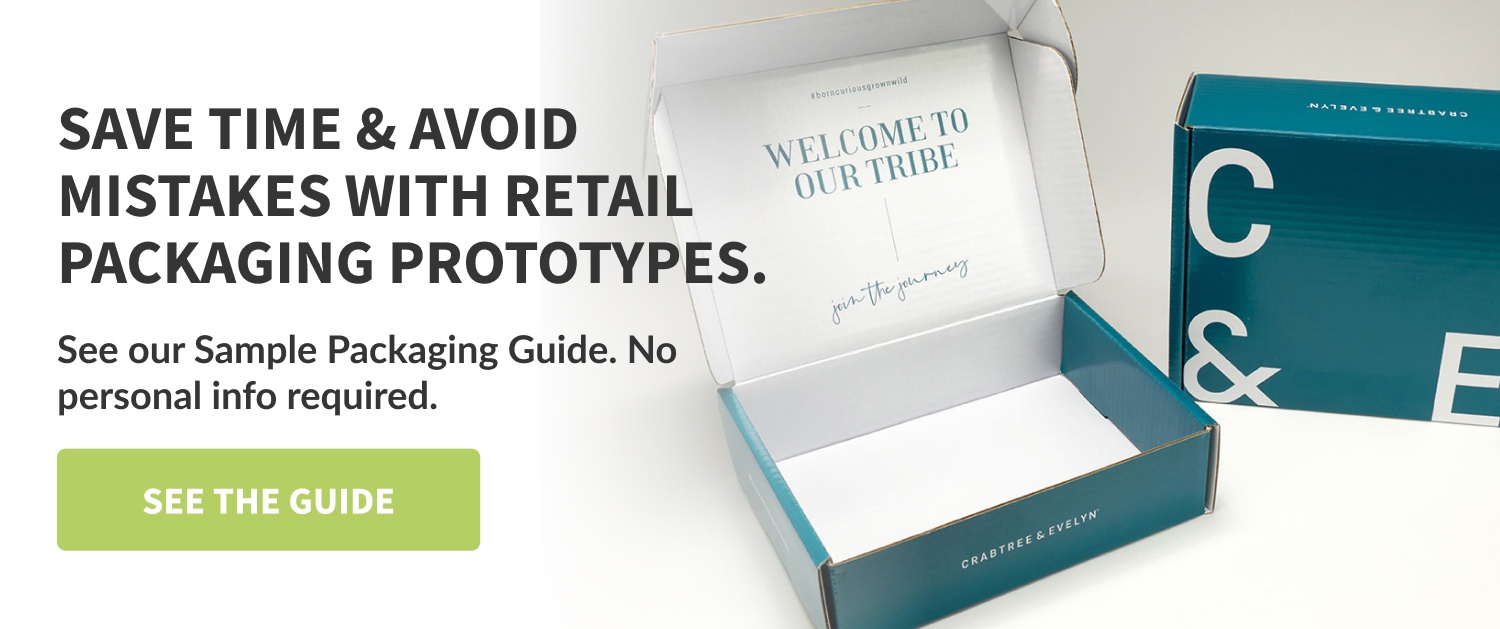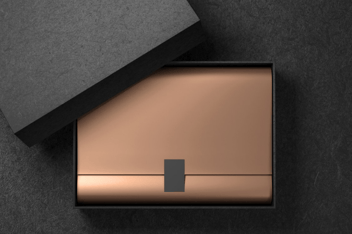E-commerce Packaging vs. Retail Packaging: 10 Key Differences
When it comes to packaging your products, you have two main options: “retail” packaging and “e-commerce” packaging. While both types of packaging should protect and present your products, there are significant differences between the two.
It's important to understand these differences and how they can impact your business. Working with an experienced packaging design company can help you navigate the nuances of selecting packaging for your product and create a design that not only looks great but also meets your unique needs.
Retail Packaging
In stores, packaging is sometimes referred to as the “ silent salesman.” Retail packaging is designed to be visually appealing and to catch the attention of shoppers. It typically includes features such as clear product images, brand colors and labeling, and product information. The packaging is often made of sturdy materials that can withstand being handled and transported from warehouses to stores.
Many vendors opt for retail-specific display packaging such as PDQ (pretty darn quick) trays and other options unique to retail settings, like hanging displays, countertop displays, floor displays, and endcap displays. PDQ trays are designed to hold a specific number of products, such as cosmetics or snacks, and are often used for product launches or seasonal promotions. With a PDQ tray, you’re more likely to catch a customer's eye and encourage them to make a purchase.
E-commerce Packaging
E-commerce packaging is designed to protect the product during shipping and handling a la parcel carrier delivery. It may not be as visually appealing as retail packaging, but it needs to be more durable and able to withstand the rigors of transportation.
Some unique packaging options used in e-commerce packaging include poly mailers, which are lightweight and easy to ship, and cardboard boxes that can be customized to fit specific products. E-commerce packaging often includes branding and marketing messages printed directly on the packaging to reinforce the brand and create a memorable unboxing experience for the consumer.
10 Differences Between E-commerce vs. Retail Packaging
If you’re trying to decide on packaging for your products, it’s helpful to understand what makes each type of packaging unique. From there, you can work to create a functional and eye-catching package that both protects your products and attracts customers.
- Size: The size of your packaging plays an important role. Retail packaging can be larger and eye-catching on store shelves, while e-commerce packaging usually aims to be small and compact to reduce shipping costs.
- Durability: Since e-commerce packaging must withstand shipping and handling, durability is foundational. On the flip side, retail packaging only needs to survive transport from the warehouse to the store.
- Protection: E-commerce packaging should be designed to provide maximum protection for the product during shipping, while retail packaging focuses more on presenting the product in an appealing way.
- Graphics: Retail packaging often includes eye-catching graphics and branding to attract customers in-store, while e-commerce packaging may have minimal branding due to limited space.
- Unboxing experience: E-commerce packaging often aims to create a memorable unboxing experience for customers, while retail packaging is designed for immediate shelf appeal. In some products, if a package return is needed, the package should be able to hold up for a return trip.
- Materials: E-commerce packaging often uses lightweight materials to reduce shipping costs, while retail packaging may use more substantial materials for added perceived value.
- Customization: E-commerce packaging can be customized for each individual order, while retail packaging may be more standardized.
- Cost: E-commerce packaging is generally less expensive due to smaller sizes and the use of lightweight materials, while retail packaging can be more costly due to the need for eye-catching designs and materials.
- Environmental impact: E-commerce packaging may prioritize environmentally friendly materials and design due to the increased volume of shipping, while retail packaging may not have the same environmental concerns.
- Transportation: Retail packaging is often transported in bulk on pallets, while retail E-commerce packaging is usually transported in smaller quantities via trucks or other vehicles.
Related Content: How to Design Unique Retail Packaging
How a Packaging Company Can Help
A packaging design company can help you understand the key differences between e-commerce and retail packaging and how they can affect your brand and sales. With expert guidance on the functionality of each type of packaging, you can design packaging that meets the unique needs of each channel.
A professional that offers both packaging design and engineering can also work with you to ensure your packaging is visually appealing, effectively communicates your brand message, and meets any necessary regulatory requirements. They can provide a range of design options and customization, such as the use of colors, graphics, materials, and finishes, to create packaging that truly reflects your brand and sets you apart from the competition.
Takeaway
Understanding the fundamental differences between e-commerce and retail packaging is the first step toward making informed decisions about your product packaging. Working with an experienced packaging company provides valuable insight into the functionality and key elements to build your brand.
From selecting the right materials to creating innovative packaging solutions, a packaging company can help you navigate the complexities of packaging design and create packaging that meets your unique needs and sets your products apart from the competition.






